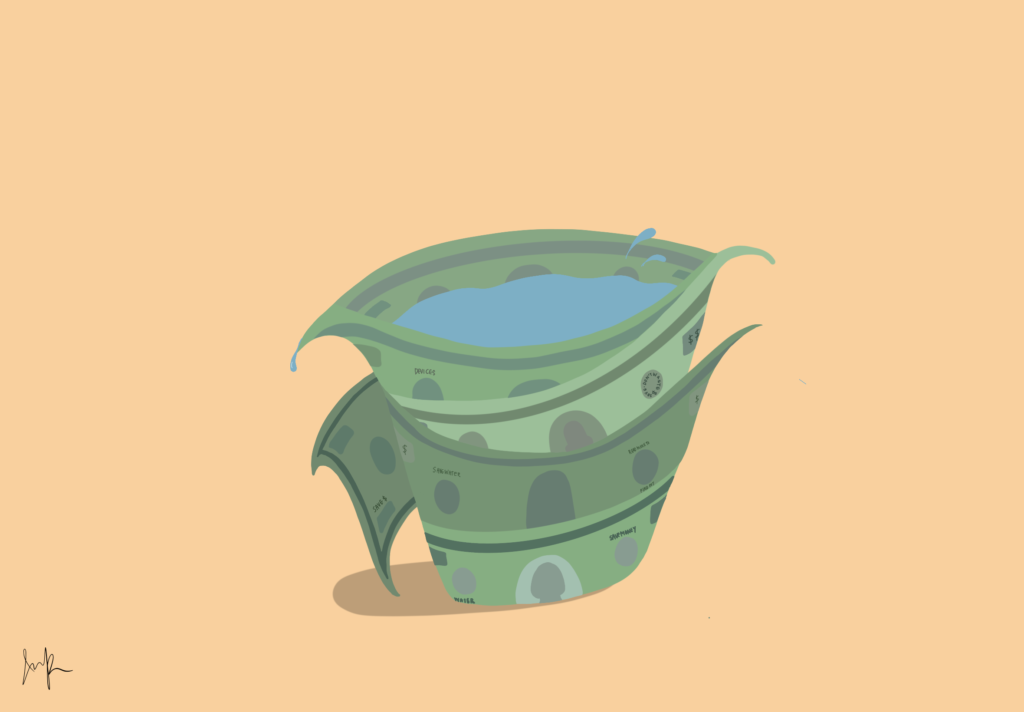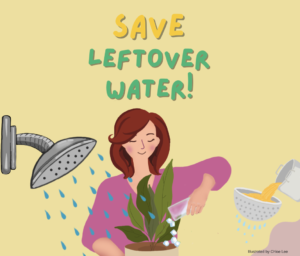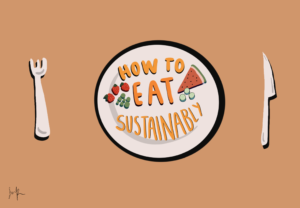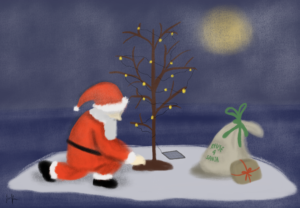
Disclaimer: fraud is a thing, and it’s out there. But there are ways you can avoid it! When shopping for these water-saving appliances, check that they are certified by the Environmental Protection Agency (EPA). Products that meet the federal standard will have a label that says “WaterSense” and “meets EPA criteria.” In any case, it’s always best practice to do research before you buy a product!
Money matters, right? Every cent counts. Just like how every drop of water should count. What, you don’t think so? Imagine you’re suddenly living in an isolated terrain. The land is surrounded by water–so beautiful! But you mustn’t drink it because it’s salt water. So you begin the hunt for freshwater, but it’s been three days, and you find none. How can one survive without water for three days, you ask? Well, you’ve found plenty of stored food to eat on your hunt, but they do nothing to quench your thirst for water; your meals taste like sawdust, the vegetables are too bland, and even the juicy fruits are too sweet. How you wish for even just one drop of fresh, pure water!
By 2040, when the world is projected to run out of freshwater, that may just be the situation of more than 7.7 billion people in the world.
But! It doesn’t have to be that way. With a change in our individual habits, we could be saving a lot of water – and a lot of money. According to the EPA, the average household spends as much as $500 per year on water and sewer bills (Gaskins). Now, that’s an incentive, right?
Keep reading to learn about some of the most efficient water-saving methods:
- Go low-flow
Chances are you already have one for your faucet since it’s required by federal standards. Low-flow limits the speed at which water flows from its source to your sink, making EPA’s “20% less water” statement that much more achievable. So why not go low-flow with your shower heads and bathroom faucets as well? According to experts interviewed by Realtor, low-flow kitchen faucets can save as much as $20 per year, shower heads anywhere from $60 to $100, and bathroom faucets…just get it.
- To aerate or not to aerate…
…that is the problem, isn’t it? Depends on who you ask. Aerating just means that air is mixed into the water stream as water passes through the shower head; the benefit of this is that you can take a shower with a balanced water pressure. However, non-aerating shower heads do not mix air with the water; as a result, less temperature is lost when the water reaches you, resulting in a warmer shower.
Side note: you can also get an aerator for your faucet! And you totally should because it works the same way as a low-flow faucet, but it just costs anywhere from $1 to $5. The only catch is that these faucet aerators may not work on older faucet models. Speaking of “old” …
- Old is out.
New is in; get a new washer! According to Energy Star, most of its clothes washers use four times less energy than those manufactured before 1999. Although getting one upfront may cost $800 and up, the cause is worthwhile; washers are the second largest water-consuming source of the house! When choosing your washer, also look for a low water factor–the lower it is, the lesser water is used.
- Find and fix
Before getting anything new, though, check that the equipment you already have actually functions properly. Running toilets, constant faucet dripping, and sprinkler systems are all great places to start.
With these techniques, imagine how much money and water can be saved over time!
It’s up to you, reader. Now is the time to get started.
BIBLIOGRAPHY
https://www.ctc-n.org/technologies/water-efficient-appliances-fixtures
https://www.epa.gov/watersense/about-watersense
https://www.realtor.com/advice/home-improvement/best-water-saving-appliances-faucets/
https://www.energystar.gov/products/saving_water_helps_protect_our_nations_water_supplies
The views and opinions expressed are those of the authors and do not necessarily reflect nor represent the Earth Chronicles and its editorial board.









